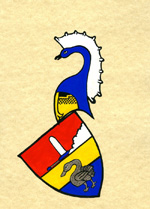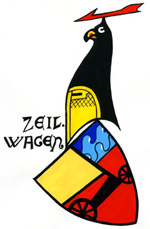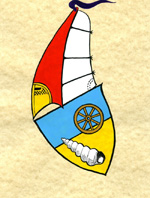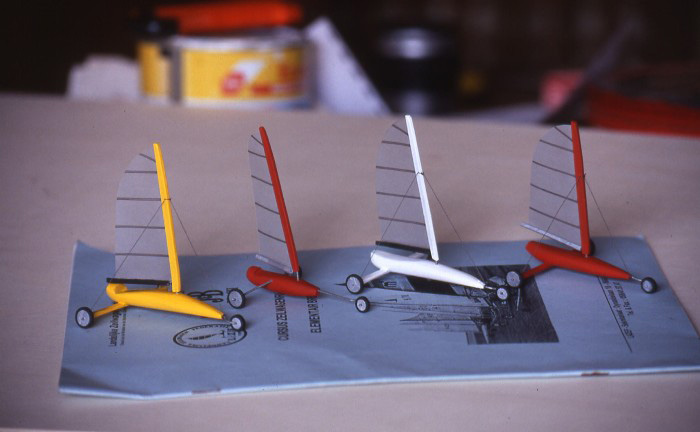

land.sailing art
Variations introduced by the wind & the sea over Strohl's Heraldischer Atlas
 |
 |
 |
 |
 |
 |
 |
it
was used by Lenin to inspect the Red Army, engaged to launch the
offensive against Gen. Kolčak which led to the Samara victory.
The chassis of the yacht was made out of a car obtained by requisition
from Lady Sansroues, fled to France during the first days of the
insurrection. The sentence written in Cyrillic on the sail means
‘for the Soviet Union!’. According to the evidence collected
in Siberia during the second half of the Thirties by the Political
Commissar for the Ice, it seems that Lenin himself loved driving
and hauling the sheet, whistling the nice tune ‘The drunken
sailor’ (other people added that the lyrics of the song was
changed into ‘The drunken Georgian’). Since January
1924 we have lost all trace of this yacht: Stalin, together with
a variety of other things, did not love sailing in a particular
manner. |
|
built
around 1786 according to an original plan by Giuseppe Antonio Guarnieri
known as ‘del Gesù’, it was made of deal, while
the bottom of the hull was made of maple, which gave it a lower
tone. For about half a century we do not know anything about it,
until it appears again in Nevada, used by a carillon manufacturer
of Bohemian origin, who seemed to be devoted to occultism. According
to the tale, Mojmìr Vyšebrod went out only during
windy nights and he did not do anything to drive the yacht. Actually,
it seems that it was enough to write a violin composition on the
sail parchment to make the arched boom move following the score.
Some Shoshoni Indians claimed they often saw a red devil in the
desert which zigzagged letting out a terrible sound, but the ethnologists
of the time did not believe them. Mojmìr Vyšebrod
spent his last days in the sanatorium in Reno, suffering from violent
migraines and delirium tremens. |
 |
|
 |
in the spring, 1903 the calendar of the first Championship of Floral Wind was announced to the press. The regattas took place on the shores of Belgium, France and Holland: they broadly met with the public’s approval and saw a wide presence of competitors coming from all Europe. The show aroused the Americans’ interest too, who turned up in April 1907 with a landyacht which had a sail about 319 metres high, surmounted by huge metal gargoyles placed on the four cardinal points. The promoters refused their enrolment: the landyacht drew away from the spirit of the age and kept the sun off. On the whole, the yacht turned out to be safe and reliable. There was only a problem due to the fact that the mast easily collapsed because of the heavy number-bearer ornament made of forged iron. |
